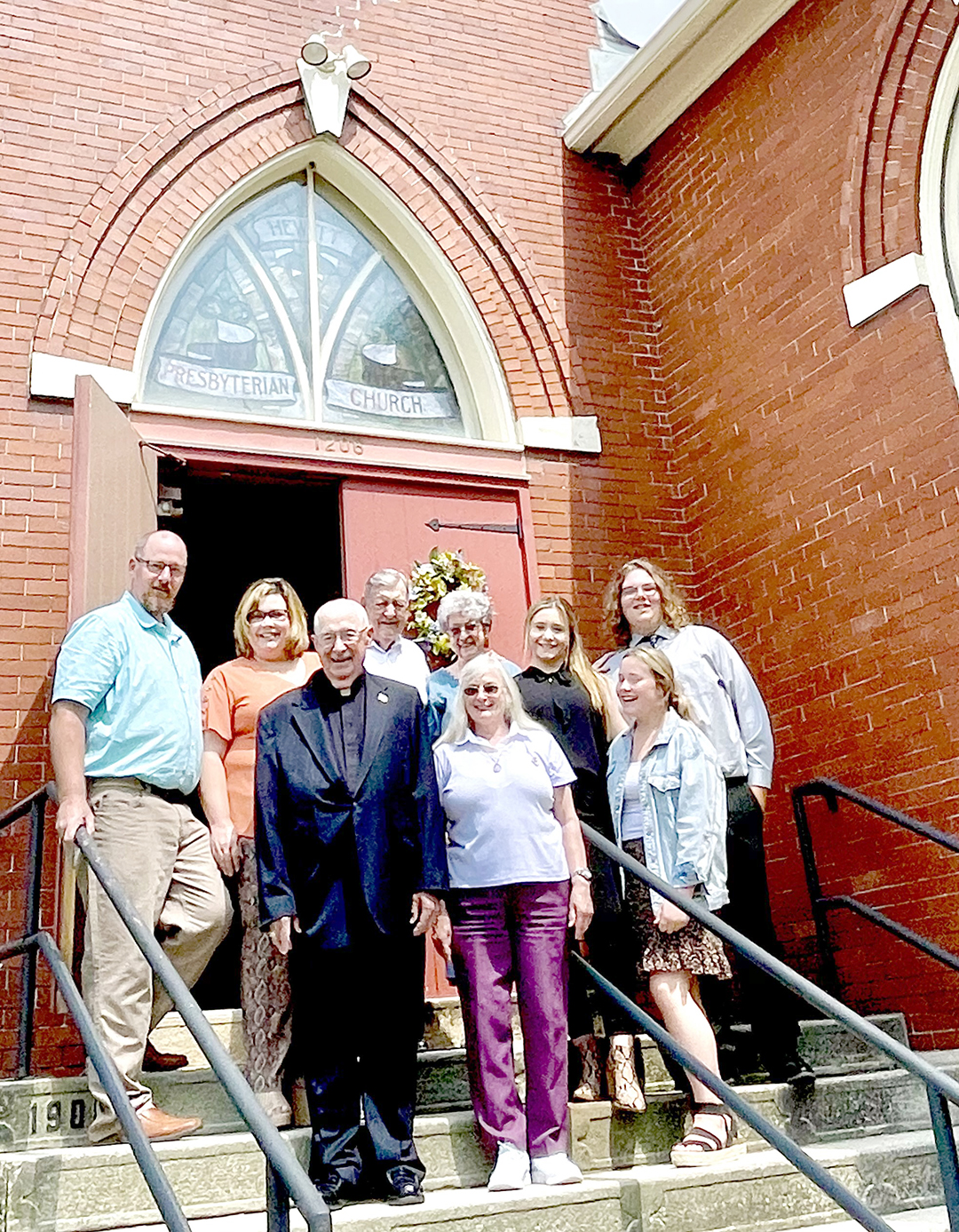Hewitt Presbyterian Church sits on the bluff above Rices Landing, where every road to that old river town drops into a rocky ravine then ducks under the abandoned railroad bed that is now Greene River Trail and then emerges where streets and buildings edge the banks of the Monongahela River.
The most obvious tie Hewitt Church has to Rices Landing is its name. According to historic author G. Wayne Smith the family name Hewitt was well established here in the economic boom times of the late 19th century. Isaac Hewitt Jr. was operating Stone Pottery Works in Rices Landing in 1870 and in 1871 Adam Hewitt donated land to the Cumberland Presbyterians to build a church of their own. Church history tells us that Presbyterianism, a direct descendent of the Church of Scotland, established itself in Philadelphia in 1703 and missionaries made their way to the Redstone Settlement – a trading outpost that would become Brownsville – and then to Greene County with the first Scots Irish frontiersmen.
After the Revolution, a religious spiritual revival began in 1799 as settlers pushed westward into Kentucky and Tennessee. This grass roots movement with its passionate months long revivals brought many new conversions but too few official church trained pastors. From these new congregations now far from the organized structure of the Presbyterian Synod in the east would come fiery preachers who returned to Greene County, held their own long revivals and established “vigorous” Cumberland Presbyterian congregations. Hewitt church records notes that by the 1840s the Cumberland Presbyterian congregation in Rices Landing was well established.
With no church of their own, parishioners attended church in Carmichaels, Jefferson and Millsboro “during the winter season, when opportunity afforded,” and held services between times closer to home at Strawn’s schoolhouse. There was talk of building a church but it would be twenty years before Reverend Gibson “a man dedicated to his calling took up the matter in earnest.” Adam Hewitt donated a tract of land, a wooden church was built and Reverend H. J. Coulter preached the first sermon in 1871.
G. Wayne Smith tells us that in April 1905 the congregation voted to become members of the Redstone Presbytery of the Presbyterian Church U.S.A. New country churches were all the rage in Greene County as a new century dawned and congregations outgrew their first churches or needed to rebuild after storm damage or fire. When Hewitt Church was destroyed by fire, it was replaced in 1909 by a beautiful brick veneer building with a classic steeple and fine arched windows on another portion of Hewitt’s donated land. It cost a tidy $12,000 and could seat 400 in the chapel with room for 150 more in the Sunday School rooms upstairs. A kitchen and meeting rooms were in the basement.
When I pull into the empty space across the street from the church for a Sunday visit, longtime member Mona English tells me later on the phone that Strawn’s schoolhouse once stood where I parked.
“It was still there when my husband Bob and I moved here in 1958. The Strawn family lived in it.” Like many old frame buildings, it had seen its last better days and when the last family member was gone, the church bought the property and made a parking lot for parishioners.
Mona, who is choir director, and her husband Bob live nearby. She has a lifetime of stories to share about her neighbors and serving as an elder more than once in this old school country church that cares lovingly for its neighbors and does church business the democratic way that predates our nation’s democratic process of representation and the right to vote.
“Our ruling body is elders and nearly everyone here except the newer ones have served as elders – we all rule the church together.”

The church gives to 10 yearly missions, Mona tells me, including Salvation Army, Restoration Power, a substance abuse outreach by Rev. Bob Hedges, City Mission in Washington and a sister church in Ethiopia.
Church attendance averages 50 but COVID-19 has some members opting to stay home to be safe, Mona admits. Fundraising has been affected as well. “We had to cancel our annual spaghetti dinner but we’re thinking about doing take out. Hardest to give up is selling homemade chocolate pecan turtles that always sell by the countless dozens: “We can’t get together to make them.”
Mona’s comment on fundraisers makes me remember that G. Wayne Smith found a wonderful story about Hewitt Church in his newspaper sleuthing that I ran across while researching this story. Hewitt Sunday School wasn’t listed in the index but I found it tucked away on page 195 under Vacation Trips And Excursions. A “very successful recreational enterprise” by the Hewitt Cumberland Presbyterian Sunday School happened in August 1890. The “grand excursion boat” City of Pittsburgh, towed by the tugboat Blackmore, was rented for a round trip from Fredericktown to Morgantown and 900 people up and down the river bought tickets – from one dollar for men to a quarter for kids. The Jefferson Brass Band played for the 35 minutes it took to get through the lock in Rices Landing. Then it was on to Greensboro and the “interesting little college town” of Morgantown. The return journey made it to Rices Landing by midnight, with one participant reporting that because of church sponsorship “Hoe Down was forbidden” but in the moonlight on the way home some “tripping of the light fantastic was engaged in by a set of youths who lacked none of the grace of those who lead the chorus for the Naiads of old.”
Naiads aside and after paying expenses the Sunday school made “about 200 dollars on the venture.”
I tell this story to Mona and we laugh. What would 200 dollars be in today’s money? We laugh again and joke about social distancing but the thought remains. Wouldn’t that be a great fundraiser? Hold that thought!
